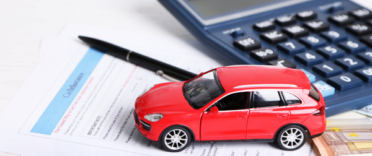Who should check their tax code?
Anyone receiving an income via PAYE (pay as you earn). So if you are self-employed and not receiving a pension you won't have a PAYE code.
How do I find out my tax code?
It will be stated on the following:
- A ‘notice of coding’ sent to you by your tax office. (usually received in January or February but not everyone receives one. Whether you receive on depends on whether your allowances and reliefs change each year)
- Your payslip
- Your P45 if you are between jobs
- Your pension statement if your are receiving an occupational pension.
- Or simply ask your employer to tell you
What does my tax code look like?
Your tax code contains several numbers and a letter such i.e. 117L or K497
What does it mean?
As stated by the HMRC:
Assuming your tax code is a number followed by a letter:
- If you multiply the number in your tax code by ten, you’ll get the total amount of income you can earn in a year before paying tax.
- The letter shows how the number should be adjusted following any changes to allowances announced by the Chancellor – common tax code letters are explained below.
Common tax code letters and what they mean
| Letter | Reason for use |
| L | For those eligible for the basic Personal Allowance – 810L for the 2012-13 tax year and 944L for 2013-14 tax year. It is also used for ‘emergency’ tax codes |
| P | For people aged 65 to 74 and eligible for the full Personal Allowance |
| Y | For people aged 75 or over and eligible for the full Personal Allowance |
| T | If there are any other items we need to review in your tax code |
| K | When your total allowances are less than your total ‘deductions’ . A K code is used to ensure you pay tax on the excess. |
Other tax codes
If your tax code has two letters but no number, or is the letter ‘D’ followed by a zero, it is normally used where you have two or more sources of income and all of your allowances have been applied to the tax code and income from your main job or pension.
| Other tax codes and what they mean | |
| Code | Reason for use |
| BR | Is used when all your income is taxed at the basic rate – currently 20 per cent (most commonly used for a second job or pension) |
| D0 | Is used when all your income is taxed at the higher rate of tax – currently 40 per cent (most commonly used for a second job or pension) |
| NT | Is used when no tax is to be taken from your income or pension |
If you have two jobs or pensions, it is likely that all of your second income will be taxed at the basic or higher rate – depending on how much you earn. This is because all of your allowances will have been used against the income from your main job or pension.
How do they work out my tax code?
For the majority of people their tax code for the tax year 2012/2013 will be 810L and and 944L for 2013/14 tax year.
The dreaded emergency tax code
Occasionally your employer or pension payer will give you an emergency tax code until they work out your correct one. For me personally this has been where all my problems have arisen in the past. Usually when you start a new job you give your new employer a copy of your P45 (the form given to your by your previous employer) This provides them with the information required to put you on the correct tax code. If you either fail to do so or employer’s wage department make a hash of things you may end up on an emergency tax code. For most people this code will be fine but if you have not earned anything in the tax year prior to starting your job or you are entitled to more than just the basic personal allowance then you could be over taxed. If this is the case speak to your employer or HMRC ASAP!
Will I get a tax refund if I have been over taxed?
Once HMRC have been given details of your previous income and tax paid for the tax year, they will send your employer (and you) your full (correct) tax code. Your employer will deduct the correct tax in future and refund any overpaid tax.
Alternatively if at the end of the tax year you feel you’ve paid too much tax on an emergency code you need to make a manual claim directly to HMRC. (for which you will need a copy of your P60). It is a case of you don’t ask you do not get!
This makes my head spin is there another way to make sure I’m paying the correct tax?
Yes, there is. You can use an online calculator such as this one to check that the net pay you are receiving is correct. It’s very simple to use and in 10 seconds can give you peace of mind that you are either a) paying the correct amount of take b) or due a tax rebate.






